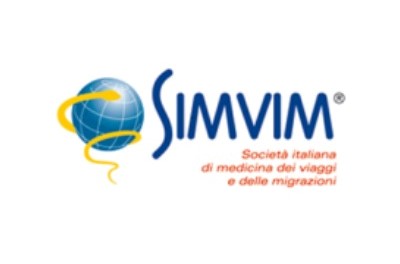West Nile Virus
West Nile virus is a mosquito-borne virus first detected in 1937, in a fever patient in the West Nile district of Uganda, a fact that made it one of the first arthropod-borne viruses ever identified.
CAUSES
West Nile Virus (WNV) is a single-stranded RNA virus that belongs to the family Flaviviridae, in the Flavivirus genus. This family includes several important pathogens that can be transmitted by human arthropods, including the Dengue (DENV), Zika (ZIKV), tick-borne encephalitis (TBEV), yellow fever (YFV), and Japanese encephalitis (JEV) viruses.
It is an enveloped, spherical virus of approx. 40-50 nm in diameter, with a double lipid membrane surrounding a capsid core. The genome codes for seven non-structural proteins and three structural proteins: the envelope, membrane, and capsid proteins.
Following the bite of a WNV-infected mosquito, the virus reaches the cells via the bloodstream. It then starts to multiply in the tissues, producing a low-level viremia, which decreases with the arrival of the anti-WNV IgM antibodies. The virus subsequently infects the organs (such as the spleen, liver, kidney, and CNS) and was even detected in the urine of a patient, 8 days after the onset of symptoms.
TRANSMISSION
The virus uses other animals and insects as its reservoir, particularly wild birds and mosquitoes, which are also the main vectors involved in its transmission to humans.
The mosquito most frequently responsible for the disease is the genus Culex, although the virus has also been found in 65 other mosquito species and 326 bird species. In North America, although the WNV genome has been found in more than 58 mosquito species, Culex pipiens (the northern house mosquito), Culex quinquefasciatus (the southern house mosquito), and Culex tarsalis, are the most important vectors; the virus has also been isolated in ticks in the Eastern Hemisphere, but their role in the transmission cycle is still unclear.
Almost all human WNV infections are caused by the bites of infected mosquitoes; however, other modes of transmission in humans have been observed. Transfusion-associated WNV transmission was first identified in 2002, when 23 people in the United States were infected after receiving platelets, red blood cells or plasma, from 16 viraemic blood donors.
A similar case occurred in 2005, when the virus infected three of four organ recipients from a common donor with WNV infection. This donor was seropositive for WNV IgM antibodies but negative for WNV nucleic acid, suggesting that transmission may be possible also in the absence of detectable serum viremia.
Since that time, many more cases or clusters of WNV infection acquired through solid organ transplantation have been reported in the United States and Europe.
Other rare transmission circumstances have been identified. Intrauterine transmission has been documented in a case of a mother who was infected with WNV at approx. 27 weeks' into gestation and subsequently delivered a baby with severe chorioretinitis and lissencephaly.
GEOGRAPHICAL DISTRIBUTION
West Nile virus is globally distributed and maintained by a complex transmission cycle involving multiple mosquito and bird species; with widespread distribution in Africa, the Middle East, some parts of Europe, the former Soviet Union, South Asia, Australia and, since 1999, North, Central and South America, and the Caribbean.
The first outbreak of WNV occurred in Israel, in 1951. This was followed by outbreaks in 1952, 1953, and 1957 with the first recorded case of severe neurological disease caused by WNV.
Since its emergence in the Americas, in 1999, the virus has led to over 48,000 reports, 24,000 neuroinvasive cases, over 2,300 deaths, and an estimated 7 million human infections in the continental United States. The 2002 and 2003 seasons were the largest WNV neurological disease outbreaks ever recorded; with 2003 representing the largest WNV outbreak to date. Currently, WNV is considered one of the most important zoonotic diseases of concern for people in the United States and beyond.
WNV remains a significant threat to humans in many parts of the world.
In fact, its potential to cause epidemics in endemic areas is alarming. Furthermore, its ability to acquire mutations that lead to increased virulence, paired with its flexibility in using various mosquito species as vectors and birds as amplifying hosts, make outbreaks extremely unpredictable.
Finally, global warming and the ever-increasing traffic of humans, animals, and goods, are all factors that favour the spread of WNV even further.
SYMPTOMS
The incubation period from the moment of the infected mosquito bite ranges from 2 to 14 days.
The disease is usually mild. Only 20% of infected patients may experience nonspecific symptoms, such as fever, general malaise, cough, headache, eye pain, nausea, vomiting, and enlarged lymph nodes, but more severe cases, with neurological complications, such as encephalitis or meningitis, are also possible, and mainly affect the elderly or immunocompromised individuals.
DIAGNOSIS
Diagnosis of WNV infection is conducted using laboratory tests. This can sometimes be challenging due to the constant mutation of the virus from season to season; a low viral load at the onset of the disease, and the reactivity of the test to other flaviviruses.
If the virus involves the CNS (Central Nervous System), diagnostic tests are performed on cerebrospinal fluid, which is taken via lumbar puncture.
TREATMENT
Currently, there is no definitive treatment for WNV infection. Supportive therapy is adopted to treat symptoms and pain, with monitoring of a number of vital parameters. Patients with uncomplicated WNF do not usually require specific intervention, although headache control and rehydration may sometimes be necessary.
However, infected people with other risk factors, including advanced age and immunosuppression, should be observed to prevent the potential risk of progression to a more severe neuroinvasive disease.
The antiviral agent ribavirin has shown in vitro activity against WNV infection, but its efficacy has not yet been demonstrated in animal studies or humans.
PREVENTION
From a public health perspective, given the absence of a definitive treatment for WNV infection, prevention remains a key focus in the management of human WNV infections.
Prevention can include community-based programmes and personal protection measures. Public mosquito control programs to reduce vector populations are employed to varying degrees in many communities across North America, and may also involve the removal of mosquito breeding sites, the use of larvicides, and spraying of adult mosquitoes.
Personal protective measures include limiting outdoor activities at dawn and dusk, when mosquito activity is at its highest; wearing long-sleeved clothes and trousers to cover exposed areas of skin, and the use of approved insect repellents. The most effective repellents for use on the skin are products that contain diethyltoluamide (DEET), picaridin (KBR 3023), IR3535, or oil of lemon eucalyptus. In general, higher concentrations of the active ingredients provide a longer duration of protection, regardless of the active ingredient.
Permethrin is an effective insecticide and repellent, which is approved for direct use on clothing or fabrics but not on the skin.
Although several WNV vaccine candidates are under evaluation, none of them are authorised or available for use in humans. It is unclear whether vaccination with related flavivirus vaccines (e.g., Japanese encephalitis or yellow fever) provides significant protection against WNV disease. Although it is likely that an effective WNV vaccine can be developed for humans, the cost-effectiveness and commercial feasibility of a vaccine of this kind are still uncertain.
Bibliography:
Shoba David, Asha Mary Abraham. Epidemiological and clinical aspects on West Nile virus, a globally emerging pathogen. INFECTIOUS DISEASES, 2016. http://dx.doi.org/10.3109/23744235.2016.1164890;
JAMES J. SEJVAR. West Nile Virus Infection. Centers for Disease Control and Prevention (CDC), Atlanta, GA 30333; ASMscience.org/MicrobiolSpectrum. On: Mon, 19 Apr 2021 07:36:53
Sebastian Ulbert. West Nile virus vaccines - current situation and future directions. Fraunhofer Institute for Cell Therapy and Immunology, Department of Immunology, Leipzig, Germany
HUMAN VACCINES & IMMUNOTHERAPEUTICS 2019, VOL. 15, NO. 10, 2337–2342.
James Hadfield1, Anderson F. BritoID2, Daniele M. Swetnam, Chantal B. F. VogelsI, Ryan E. TokarzI, Kristian G. Andersen, Ryan C. SmithI, Trevor BedfordI, Nathan D. Grubaugh. Twenty years of West Nile virus spread and evolution in the Americas. visualized by Nextstrain PLOS Pathogen. https://doi.org/10.1371/journal.ppat.1008042 October 31, 2019




